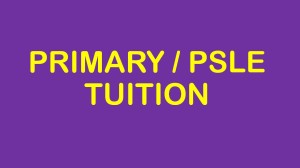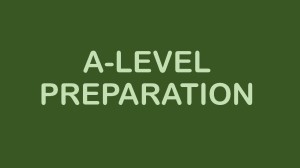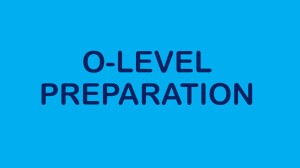Today I taught them the Higher Derivatives, using displacement, velocity and acceleration as real-life examples. I chose not to introduce the 2nd derivative as a means to test whether a turning point is a maximum or minimum, as I preferred to do that when teaching the application of differentiation in tangents and normals at a point in a curve.
Points to note:
(1) students must not write the 2nd derivative as dy^2/dx^2;
(2) d^2y/dx^2 is not the same as (dy/dx)^2;
(3) d^2y/dx^2 is the same as f”(x) or f^2(x);
(4) there may be product rule, quotient rule or chain rule involved when finding the higher derivatives.
Rgds,
Ilyasa, M.Ed, PGDE, ex-MOE Math and Physics teacher (hp: 97860411)
_______________________________________
TUITION CLASSES:
_______________________________________________________________
EDUCATIONAL SERVICES:
______________________________________________________________
By EX-MOE TEACHERS & EXPERIENCED TUTORS
@ BLK 644, BUKIT BATOK CENTRAL, #01-68. S(650644).
CALL 65694897 OR SMS 98530744 OR 97860411.
Sec 4 A. Math Reflections sat1415 19/01/2013 – Differentiation
This was our third lesson in Jan. We did the Product Rule for Differentiation after spending the last two sessions doing the Basic Rule and the Power Rule (a subset of the chain rule).
I told students to differentiate directly, in line, and not use the “let u = f(x) and v = g(x)” which is longer, more confusing and can cause more careless mistakes.
Now they are able to perform dy/dx = f(x)g'(x) + g(x)f'(x) quite quickly without introducing new variables such u and v which can be quite clumsy. Most of the time, finding dy/dx is part of a larger question, so it is unwise to make this part too long.
I ended the lesson with an intro to the Quotient Rule. Again, I don’t recommend the use of u’s and v’s and instead differentiate directly in line. We’ll be practising the Quotient Rule in the next session.
Again I tell students that Calculus is almost one-third of the A. Math syllabus, so if you want to get A1 you have to master Differentiation and Integration, which, in my opinion (and students hate it every time I say it), are amongst the easiest of topics in A.Math.
However, Integration at the A-Levels (H2 Math) can be quite difficult. But we’ll cross the bridge when we come to it. : )
Ilyasa, M.Ed, PGDE, ex-MOE teacher
(hp: 97860411)
=============================================================
For our latest timetable, click here => 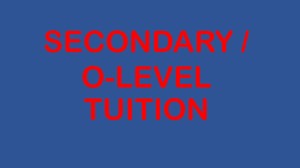
=============================================================
My (our) students’ O-Level (2012) results released in 2013
Ok la, this year I shall break tradition by posting whichever results my last year’s students inform me of. One has just come in. I will update throughout the week as I get more results (sometimes students are just forgetful).
Physics: Luke, A2 (from b4 avg, failed in sec 3 (his mum just told me), St Pat’s sch, Farkhanda, B3 (from fail avg)
Chemistry (under Mr Anthony): Charmaine A2; Bandar A2; Luke, B3; Farkhanda, B4. (from fail avg)
Science: Ben, B3.
A. Math: Ameerul, C5 (from fail avg, Yuhua sec); Loges, B3 (from C5-C6 avg, ACS(I)); Ravin, B3 (from fail avg); Rahim, B3 (from C5-C6 avg); Jin Yong, A1 (from B4 avg); Farkhanda, B3 (from fail avg).
Math: Ali Zul, B3 (from C5-C6 avg); Colin, B3 (from C5)
This year, I shall also break tradition in another way, by posting a testimonial from a student, Ravin. Below is the exact words that he smsed to me at 10.06 am on 11 Jan 2013:
“My plan is to do engineering. More to aerospace or aeronautical. I will put my first few choices as that the rest I’m still thinking. Last choice will be MI. Yes Mr Ilyasa, a lot of improvement. I did not put in a lot of effort for A-math and my sci in secondary school. In fact I was failing but I’m happy to see that I got Bs and A for my math and sci but it’s really disappointing to see a 6 for EL. Thank you for your help Mr Ilyasa. You make lesson so fun and you taught me a lot. : ) “
Well, he taught me a lot too.
Waiting for more updates from more students …..
Ilyasa, M.Ed., PGDE, full-time tutor, ex-sch teacher (h/p: 97860411)
A. Math Reflections & Study Tips
(1) Simultaneous Equations
Generally an easy topic, but beware of certain kinds of questions such as:
(a) Questions involving reciprocals of x and y, such as
Solve 3(1/x) + 1/y = 1; 1/(x^2) + 1/(y^2) = 5
Ans: x = 1, y = -1/2 or x = -5/2, y = 5/11
Do not make common denominators and cross-multiply; the better technique is to let p = 1/x and q = 1/y.
(b) Questions involving coefficient matrices that are singular (determinant = 0), such as
Given that x and y satisfy the simultaneous equations mx + (m-1)y = 10 and (m-2)x + 3my = 20,
(i) if the equations have no unique solution, find the values of m; (ans: 1/2, -2)
(ii) if the equations have no solution, find the value of m.(ans: 1/2)
(adapted from Additional Math, EPB Panpac, p. 13)
(2) Indices, Surds & Logarithms
Generally an easy topic, except for students who do not understand or memorize the laws of indices and logarithms properly. I find that quite a number of weak students do not know the meaning of logarithm, thus not appreciating and enjoying the topic. Weak students do not realize that while Indices is concerned with the answer or expression obtained when a power is applied to a base number, Logarithms is about the power itself; the power that is needed to be applied to a base to give a certain number.
For eg, why is lg1000 = 3? ‘Evaluate lg1000’ or ‘What is lg1000?’ is the same as asking, “What is the Power that must be applied to the number 10 (the base) to obtain 1000?” Since 10^3 = 1000, therefore the answer is 3.
Weak students almost always make one or more of the following mistakes, thinking that (i) logA x logB = logA + logB, (ii) log(A + B) = logA + logB, (iii) logAB = logA x logB, (iv) (logA)^n = nlogA, (v) logAB^n = nlogAB, (vi) (a^m)^n = a^(m+n). All these are wrong.
How to be good in Indices and Logarithms? READ AND UNDERSTAND THE LAWS OF INDICES AND LOGARITHMS CAREFULLY. Yes, there is such a thing as READING MATH, not just practising Math.
(3) Quadratic Functions & Equations
Some of the points to note are:
(1) Understand that alpha and beta by themselves also satisfy the quadratic eqn because they are the roots of the equation! So it’s not just abt finding the sum and product of roots;
You must be able to solve questions like:
If α is the root of the equation x^2 = 2x – 1, show that α^4 – α^2 = 2α – 2.
(2) Understand that the discriminant (b^2 – 4ac) is less than or equal to zero when the question involves the phrase “for which the function is never positive or never negative”;
(3) Understand that sometimes you are required to solve an inequality involving the discriminant but at other times the inequality involves the function itself;
(4) Understand how to complete the square to determine the maximum or minimum value of a quadratic function;
(5) Recognise that “real and distinct roots”, “real and equal roots”, and “no real roots” have other names that express the same meaning.
TO BE CONTINUED ……….. (by Mr Ilyasa)
===================================================
For our latest timetable, click here => 
Integrated Programme (IP) Math
IP students always give me headaches because they come from different schools and have their own syllabi, to the point I’ve kind of decided not to take in any IP students anymore. I’ve taught students from RV, ACS(I), NJC, RI, RGS, HCI and NYGS.
But now I’m in a dilemma, because my existing IP students are asking me to continue guiding them. Two YR4 RI boys and a YR4 RGS girl (plus her friend) are asking me to have a headstart programme in Nov/Dec to intro them to H2 Math. A YR2 NYGH student is asking me to do the same for her YR3 Math. The problem is, they may not all fit into the same session because of differences in availability and level.
If I were to proceed, it would be 2-hr sessions, lecture cum discussion style, and if they are spread out across several sessions in the same week, I would need a few more students to join us to avoid boring and expensive one-to-one tuition. So if you are an IP student and in the same level (preferably even same school) as them in 2013 (YR5 or YR3) and you need a headstart in Math, please consider joining us. You may contact me at 97860411. Thank you.
My resume: Mr Ilyasa
==============================================================
For our latest timetable, click here => 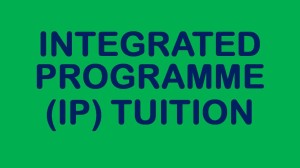
Sec 4 A. Math Group Tuition @ Bt Batok by qualified and exp. tutor
For our latest timetable, click here => 
=============================================================
ORIGINAL POST (OUTDATED):
If you are struggling with A. Math for the coming O-Levels and you need guidance for certain topics, the following tuition slots are suitable for you:
Day/Time: Mon 4.30 to 6 pm, Wed 4.30 to 6 pm.
Location: Blk 627, Bukit Batok Central.
Class size: 2 to 5 students.
Investment amt: $50 per session.
Tutor: Mr Ilyasa; M.Ed (NIE), PGDE (NIE), BSc (NUS), A-Level (RJC); ex-sec teacher (3 years); full-time tutor of O and A Level Math and Physics (8 years). To see his detailed resume, click here.
To book a tuition slot, sms to or call Mr Ilyasa at 97860411.
What to do if you had done badly for Math in SA1 in sec school …
Actually, sec students will normally do badly in their SA1 exams, although this should not be used by the students themselves to justify their poor performance. Why does this “mass slaughter” of math students happen near the middle of every year?
Well, my educated guesses are as follows:
(1) If you are in Sec 1, you probably did badly because of your poor or zero exposure to algebra, negative numbers and proper presentations while in primary school. Please realise that your single arrows, your poorly labelled statements and your misuse of equation signs will really worsen your grades this time. So please listen carefully to your sec school teacher’s illustrations on how math solutions are presented in major exams. Many of you would also have made careless mistakes in opening brackets with minus signs on the inside and the outside, and in simplifying or solving algebraic expressions.
(2) If you are in Sec 2, in addition to not having overcome the above problems earlier, you were probably slapped with an exam paper that was designed to “kill”. The ‘logic’ is simple. Sec 2 is a crucial year; it is the year you are “streamed”, the year that decides whether you will be allowed to do pure sciences or additional math in sec 3. So teachers feel that they need to “wake you up”, to humble you, so that you will work harder for SA2. So most exam papers for SA1 in Sec 2 have been set to “wipe out” students. It is not something I fully agree with, as such tactics can also demoralize students for life.
(3) If you are in Sec 3, it was probably because you underestimated the effort needed to master A. Math. Topics like Quadratic Functions and Logarithms need a lot of attention and deep thinking, and even ‘simple’ topics like Remainder Theorem and Partial Fractions have their difficult parts, the kinds that teachers like to select for exams. Make no mistake about this – teachers KNOW what concepts you find difficult to apply.
(4) If you are in Sec 4, the reason is the same as in (2) above, that your Math teachers want to “wake you up” before the prelims and the actual O-Level exam, and also because you wouldn’t have had enought time to revise both Sec 3 and Sec 4 work before the exam which started right after you were taught the last topic. That’s why some schools remove the mid-year exam in Sec 4, or postpone it to late June.
What you have to do now to avoid a total disaster for SA2?
(1) If you are in Sec 1, focus on mastering the solving of Algebraic Equations.
(2) If you are in Sec 2, focus on mastering the solving of equations involving Algebraic Fractions and mastering all the topics on Graphs (Linear and Quadratic Equations). If you have been taught Indices, master that too!
(3) If you are in Sec 3, for Math, focus on mastering Indices, Coordinate Geometry and Trigonometry. For A. Math, focus on mastering Trigonometry.
(4) If you are in Sec 4, for Math, focus on mastering all of Graphs and Vectors. For A. Math, focus on Applications of Differentiation and Integration. If you have no time to revise everything since Sec 1, focus on the topics mentioned in (1) to (3) above. If you have not mastered all the topics mentioned in (1) to (4) above, you will be in serious trouble if you do Math in JC.
Click on How to study for Math or Physics exams to know more about exam preparation.
Click on O-Level Math or Additional Math to know what books you can use for revision and practice.
Or consult Mr Ilyasa @ 97860411.
All the best in your exams!
TUITION CLASSES:
_______________________________________________________________
EDUCATIONAL SERVICES:
______________________________________________________________
By EX-MOE TEACHERS & EXPERIENCED TUTORS
@ BLK 644, BUKIT BATOK CENTRAL, #01-68. S(650644).
CALL 65694897 OR SMS 98530744 OR 97860411.
Sec Math Textbook Solutions
If you are looking for fully-worked solutions to problems found in commonly used mathematics (Additional or Elementary) textbooks in Singapore, you can check out this wonderful website created by Lee Chu Keong, a lecturer at the Nanyang Technological University: http://www.openlysolved.org
______________________________________________________________
For our latest timetable, click here => 
A. Math Reflections – Inequalities
I find that a lot of A. Math students, even JC students,
are weak in solving inequalities. For A. Math, some of the common
mistakes are:
(1) thinking that (x-4)(x+1) > 0 means that (x-4) > 0 or (x+1) > 0;
(2) thinking that (x^2 -9) > 0 means that x > +- 3;
(3) forgetting to change the inequality sign when multiplying or
dividing by a negative number, especially ‘hidden’ negative numbers such as
log(0.7).
Many JC students are also weak in solving inequalities, probably
due to not overcoming misconceptions abt inequalities when they were in
secondary school and new challenges posed by Inequalities in H2 Math, such as
in solving (x+2) / (x-3) < 0.
For our latest timetable, click here =>
______________________________________________________________
By EX-MOE TEACHERS & EXPERIENCED TUTORS
@ BLK 644, BUKIT BATOK CENTRAL, #01-68. S(650644).
CALL 65694897 OR SMS 98530744 OR 97860411.
A. Math Chap 2 – Quadratic Functions & Equations
I was teaching this topic in sch the other day and as expected, students encountered quite a number of problems with this topic. Many of my tuition students over the years also reported the same problems in handling issues related to Quadratic Functions.
Some of these problems are:
(1) not understanding that alpha and beta by themselves also satisfy the quadratic eqn because they are the roots of the equation! So it’s not just abt finding the sum and product of roots;
(2) not knowing the condition for the discriminant (b^2 – 4ac) when the question involves the phrase “for which the function is never positive or never negative”;
(3) not being sure whether one is required to solve an inequality involving the discriminant or the function itself;
(4) not knowing how to complete the square to determine the maximum or minimum value of a quadratic function (even those who can do it do not understand why it works!);
(5) not recognising that “real and distinct roots”, “real and equal roots”, and “no real roots” have other names that express the same meaning.
=============================================================

